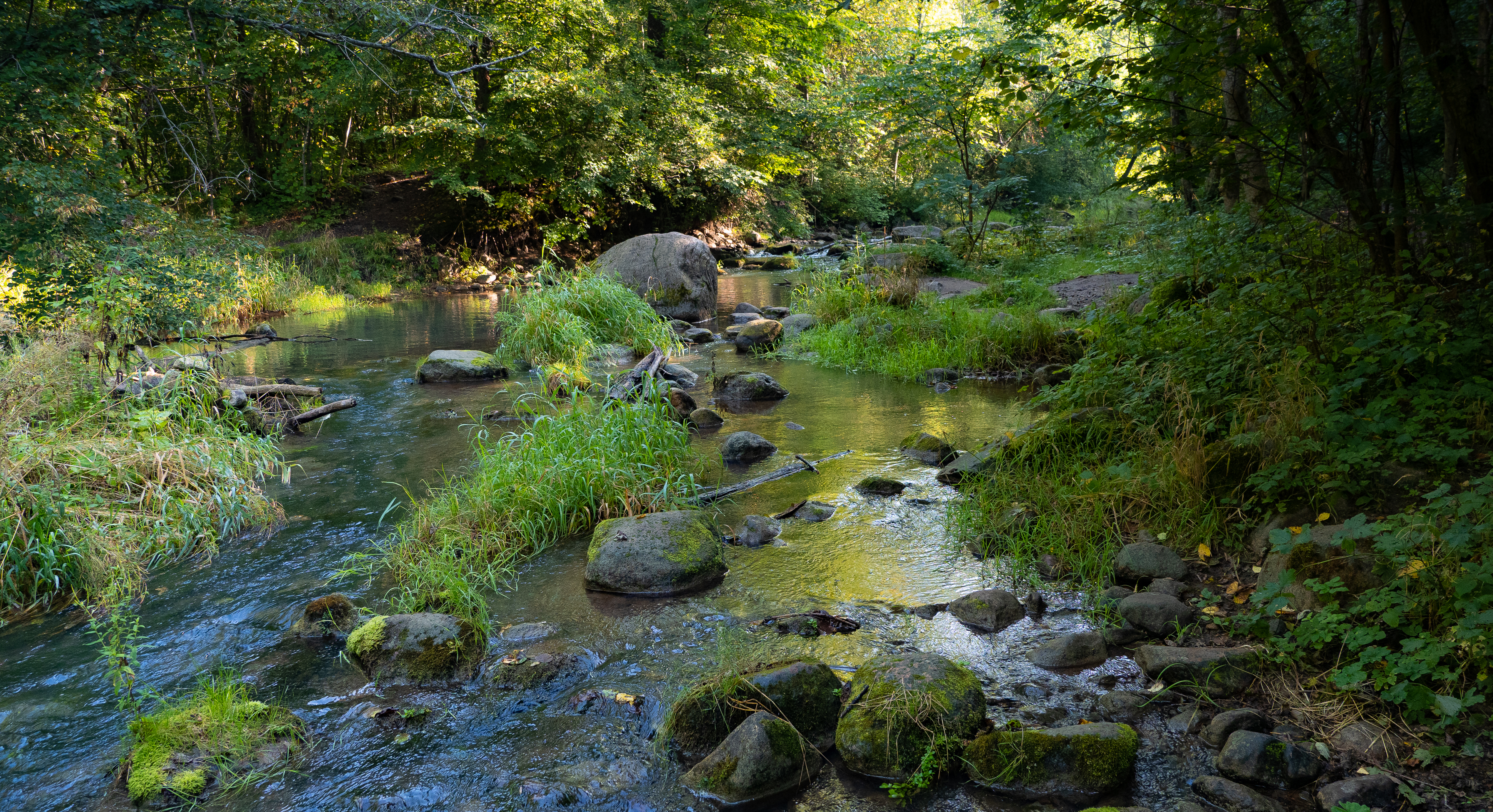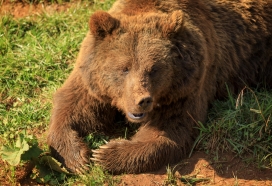
FSC has joined 100+ NGOs supporting the #Together4Forests movement.
About FSC
As the leader in sustainable forestry, FSC is trusted to protect forests for all, forever.
Learn more about FSC >Who we are
Our historyGlobal LeadershipBoard of DirectorsPolicy and Standards CommitteePermanent Indigenous Peoples CommitteeLocal FSC TeamsOur work
Why forests matterFSC’s global strategyHow the FSC system worksGovernanceFSC solutionsExplore certification
Show your commitment to responsible forestry by becoming FSC certified.
Learn more about certification >What the FSC labels mean
Every FSC label stands for sustainable sourcing that puts forests and people first.
Learn more about our labels >Earth observation
We’re harnessing the power of satellite data to help auditors monitor forest health.
Learn more >FSC Trace
We are using blockchain to ensure certification compliance throughout the supply chain.
Learn more >Wood identification
We're piloting cutting-edge technology to trace and prove the origins of wood.
Learn more >FSC standards
Our rigorous forest certification standards are the foundation of the FSC system.
Learn more >Current processes
See which policies, standards and procedures are currently being strengthened.
Learn more >System integrity
We’re committed to upholding the credibility and transparency of the FSC system.
Learn more >Open investigations
Explore our active investigations into organizations who may threaten the FSC system.
Learn more >By Industry
ConstructionFashionFibreFurnitureNatural rubberPaper & packagingRetail & ecommerceWoodOther forest productsCertification and licence options
Find the certification or licence that’s right for your business.
Start now >Other Related Links
Chain of Custody CertificationPromotional LicenceProject CertificationUse FSC’s logoBy Solution
Verified Impact for businessesVerified Impact for forest managersEU Regulation on Deforestation-free Products (EUDR)Forest managers
Ensure the long-term health and viability of your forest with FSC certification.
Learn more >Managers of small, low-intensity, or community forests
FSC certification isn’t just for global corporations. We have solutions to fit any forest.
Learn more >Governments
Make real progress toward your sustainability goals and secure the future of our forests.
Learn more >Become a member
Make your commitment to responsible forest stewardship official by becoming an FSC member.
Learn more >Members portal
FSC’s collaboration platform for current members.
Learn more >Join us at the General Assembly
26-31 October 2025 | Panama
Participate in FSC’s highest decision-making process and help influence the future of our forests
Join our mission
Put your passion to work creating a better future for forests and people worldwide.
Explore current opportunities >Learn more about FSC
What the FSC labels meanWhy forests matterStories from the forestHow the FSC system worksFSC solutionsFSC’s 2021-2026 global strategyNews & Impact
Stay up to date with the latest from FSC and the world of sustainable forestry.
See all news >Other Related Links
See all storiesThe Unsung Heroes of the ForestsPress Corner
Learn more about upcoming media engagement opportunities and find relevant media resources.
Learn more >Blog
Enhance knowledge on forests, forest management and other nature solutions
Learn more >Other Related Links
Sustainable forestryForest managementWhy forests matterLearning Centre
Position statementsPodcastsVideosAnnual reportConsumer researchE-trainingCampaignsTools & Resources Home
FSC offers a variety of tools and resources to help you work with our organization.
See the complete list >Find all documents related to FSC’s standards, policies, and procedures.
Consultation PlatformOpen for feedback: Help strengthen FSC’s standards, procedures and policies up for review.
E-TrainingLearn about the FSC system through deep dives on relevant topics.
Certificate SearchAccess the latest information on FSC certificate holders.
For FSC members: Access our primary platform for collaboration.
FSC Brand HubFor FSC certificate holders and promotional licence holders. Access FSC trademarks, campaigns, marketing assets, and other resources.
Trademark PortalFor FSC certificate holders and promotional licence holders. Access the legacy Certificate Status Watch.
For FSC certification holders and licence holders. FSC Trace is a secure platform that ensures seamless compliance verification throughout the supply chain.
FSC Risk HubAssess, visualize, and mitigate risks in forestry sourcing with our risk assessments dashboard.
Choose from the selection of the newest stories and documents below.
FSC has joined 100+ NGOs supporting the #Together4Forests movement.
The FSC Ecosystem Services Procedure has helped Maderacre verify its positive impacts on biodiversity and carbon.
Companies committed to sustainable forest management in the Congo are doing their part to advance the life of Indigenous Peoples, like the Baaka, with dignity.


After a 30-minute drive from the Lithuanian capital, Vilnius, we are finally in the Neris Regional Park. FSC certified since 2004, the park offers 10,000 hectares of unique landscapes, historical sites, and a haven for endangered species.
Today's goal is to find ancient trees and learn about the species that depend on them. Immortalized in pagan legends, many of these trees are the last guardians of once vast and sacred oak forests. Today they are home to endangered species. The sleepiest and the fairest of them all, we are told, is the fat dormouse (Glis glis). With its fluffy tail and long whiskers, it will surely steal your heart at first glance.
One by one, our team members arrive. Tires slide down a forest gravel road, brakes squeak and doors close. We circle around. Saulius and Tadas are park rangers–ecologists and our guides for the day. Adelė, Alvydas, Daiva, and Dalia are ecologists from the Lithuanian Fund for Nature. Today they will show us their work to restore the ancient trees and to protect one of the many species that depend on them – the hermit beetle (Osmoderma eremita).
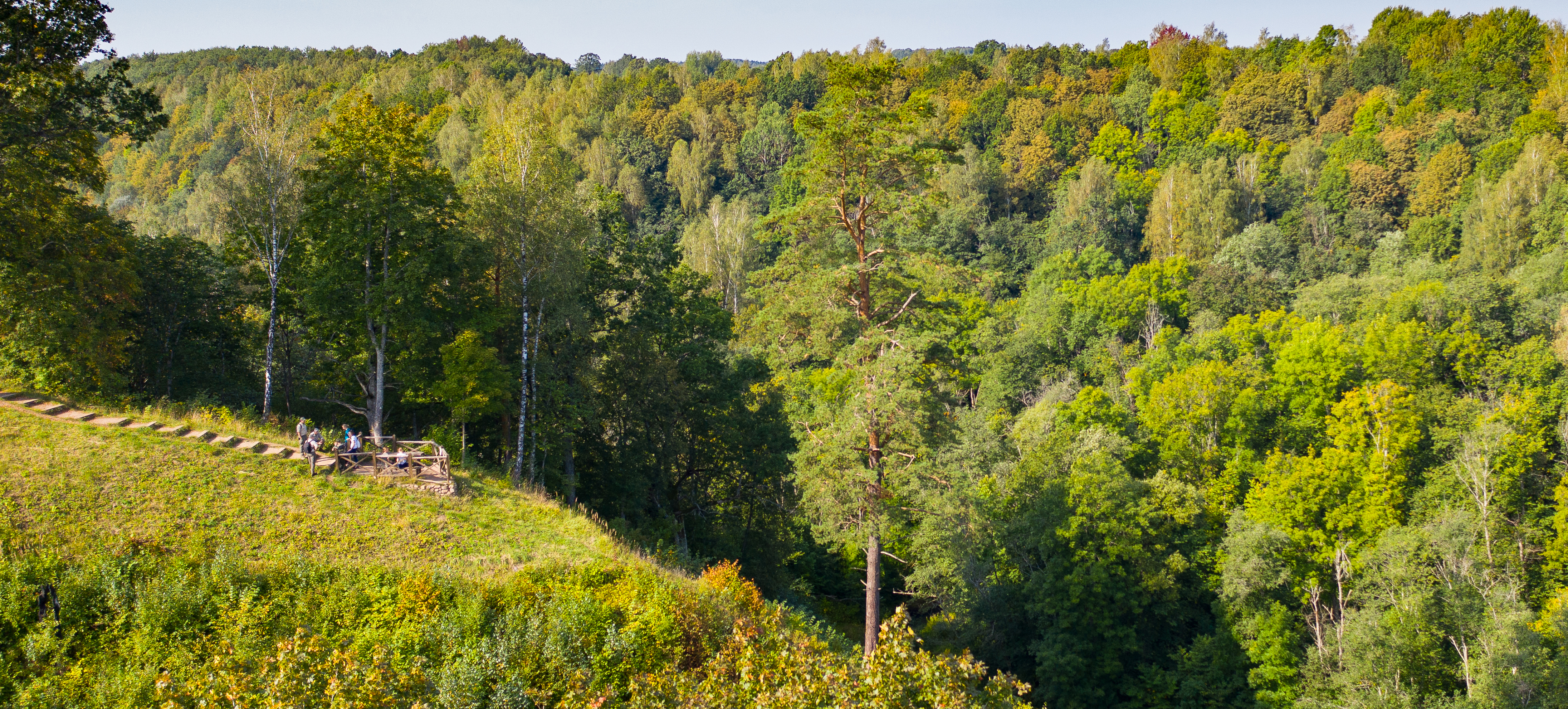
We head down to the Dūkšta River Valley. Since ancient times, this area has been ideal for human settlements, the oldest of them dating back to the 3rd century. Protected by tall hills, local Baltic tribes enjoyed fertile meadows and plenty of water and fish. Nowadays, the valley and the neighbouring Dūkšta Oak Forest – the oldest and the biggest of its kind in Lithuania – belong to the Natura 2000 network.
Down the road, we run into a dome-like hillfort. A signboard reads: ‘Karmazinai hillfort. If you are here on a Sunday at noon, put your ear to the hillside. Can you hear a bell ringing in its depths?’ In Lithuania, such pagan cultural artifacts seamlessly blend into the environment. To this day, ritual fires are lit on the top of Karmazinai hillfort: it is a sacred place where neo-pagans carry out their rites.
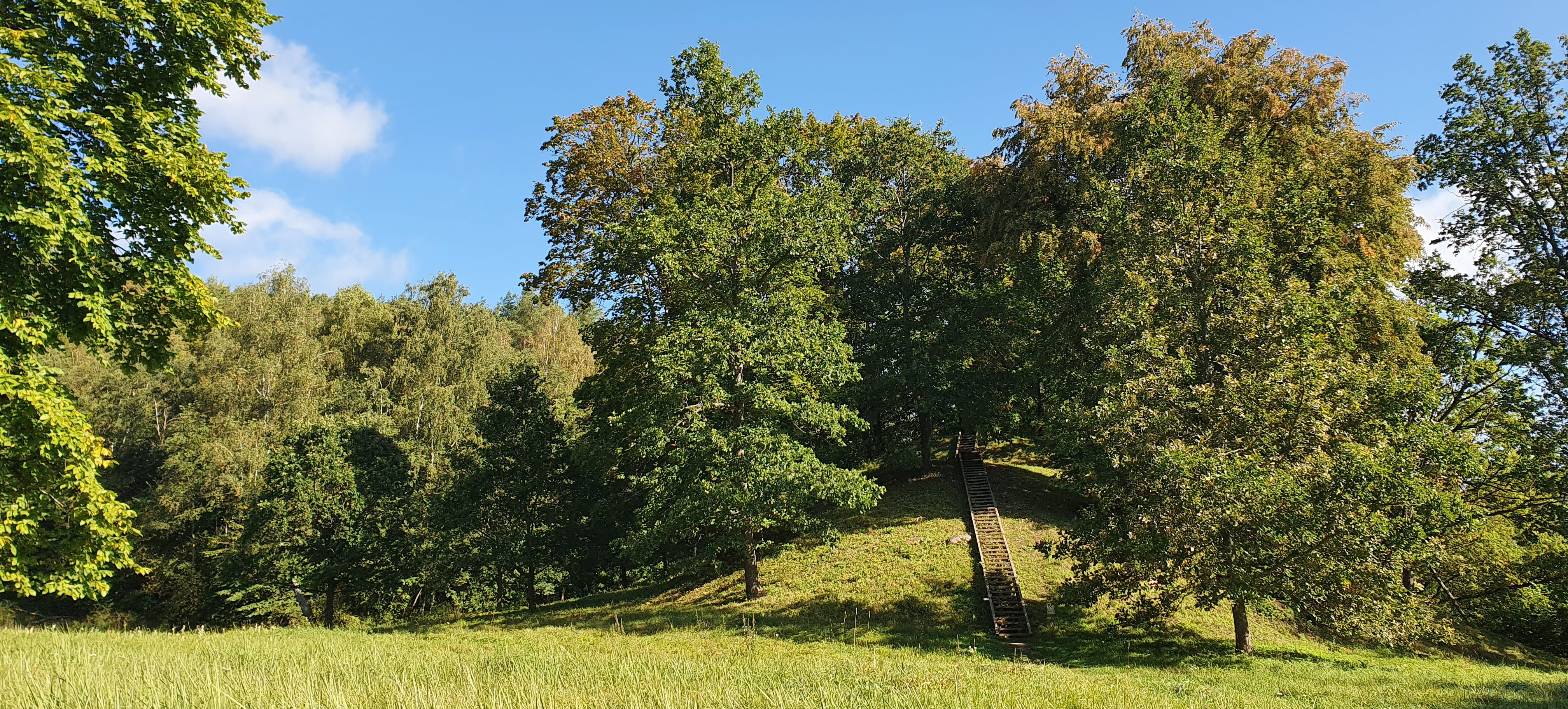
Drowning in high grass, we soak up the morning dew. The forest entrance is ‘heavily guarded’: raspberry bushes try to hold us still while nettles aim for our heads. We dodge and twist, sticking to a windy, narrow path. Only the park rangers brave through the thickets – no branch is too much for these two. Finally, we tumble into the forest. Shaded from the sun, the air here is fresh and chilly.
To our left, a nesting box is booming with life – wasp life, that is. We hurry past it, countless wooden steps down and deeper into the forest. The ground here is covered with thousands of tiny apples. “Do you see this wild apple tree?” Tadas points high above our heads, “its fruits taste like quince.” At first glance, none of these giant trees resemble an apple tree. “Fat dormice love to snack on their seeds, that’s why we often place nesting boxes near apple trees.”
Some of us finally spot the apple tree, or we think we do, but the rest of the group is already crossing the River Dūkšta. It rushes over rocks and fallen branches, so loud it even drowns out the birds. Halfway up another hill, we gather around something that resembles a mammoth skull. “Children think this is a funfair slide,” laughs Saulius. “But what you see here is an old oak, fallen six years ago. Oakwood decays very slowly and provides a habitat for many endangered species.” Indeed, 284 invertebrates, 324 lichens, and countless bird and mammal species are associated with oak deadwood. “Forest slopes are where you find enough deadwood. Other parts in forests are more likely to be swept clean for logs,” explains Alvydas.
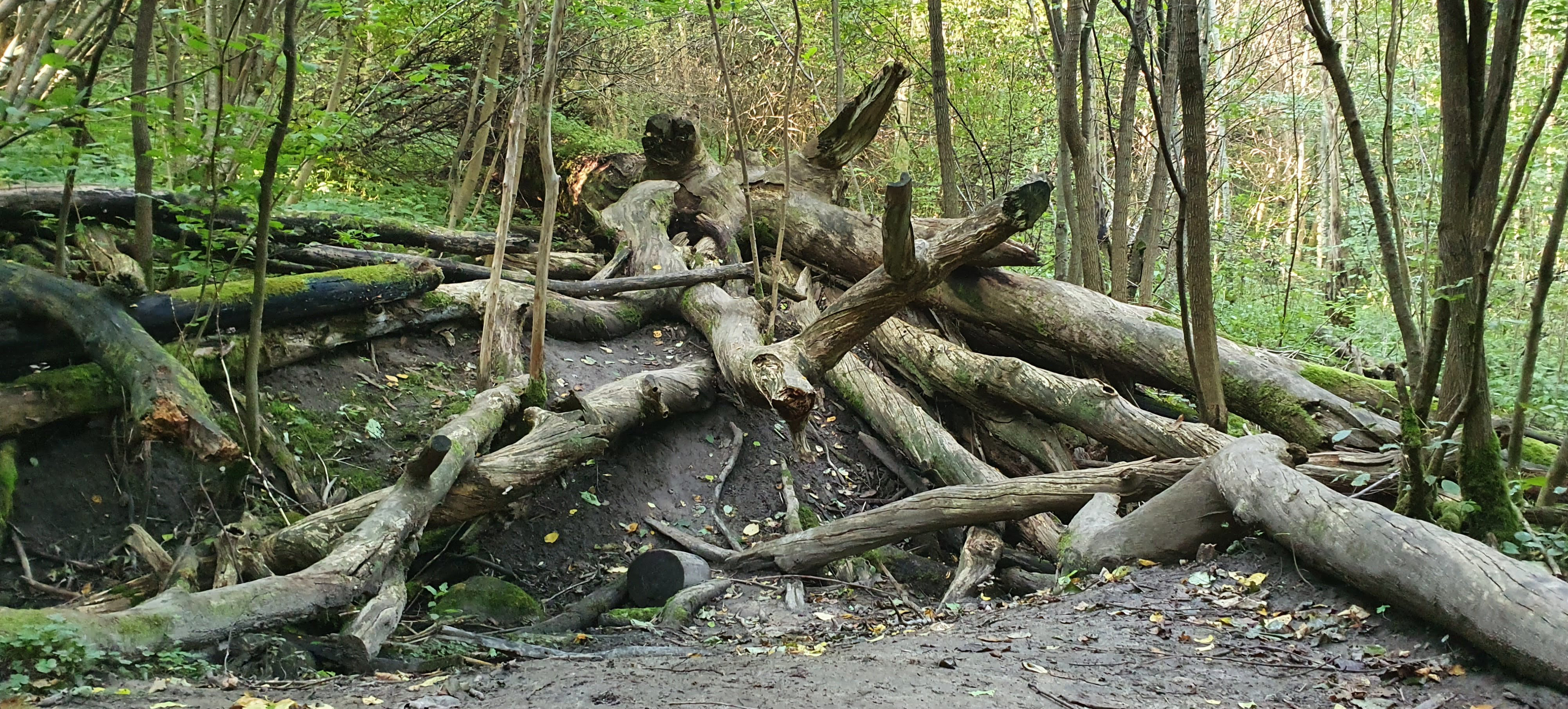
In Neris Regional Park, the deadwood is there to stay. At least 5 per cent of the logged volume must be kept as deadwood in any FSC-certified forest. But this part of the park is special: in accordance with FSC regulations, it is set aside and protected as a Representative Sample Area. It is also registered as a habitat of European Importance and belongs to the Natura 2000 network. No logging is allowed here.
We leave the fallen oak to rest and climb further up the hill. Rays of sun pass through the canopy and play below our feet. And then we see it – an ancient oak tree standing encircled by the forest. At a 2 metres radius from the tree, runs a fence. “This is the Sacred Daubų Oak,” Alvydas introduces us to the first guardian of the ancient oak forest. “It’s over 300 years old, 28 metres tall, and protected by the state as natural heritage.” We gather below its canopy and wonder how many people it would take to hug this giant.
Many tales are told about the Sacred Daubų Oak and the forest around it. The legend has it that the king of grass snakes appears here every seven years. Locals recall their great grandparents cautioning them to be kind to grass snakes, for they are holy creatures. Where we stand now, according to historical accounts, used to be a vast oak forest. Many pagan shrines are said to have been here. For the Baltic tribes, oaks were sacred: they offered home to ancestor souls and to Perkūnas, the god of thunder. For them, to fell an oak was considered a great crime.
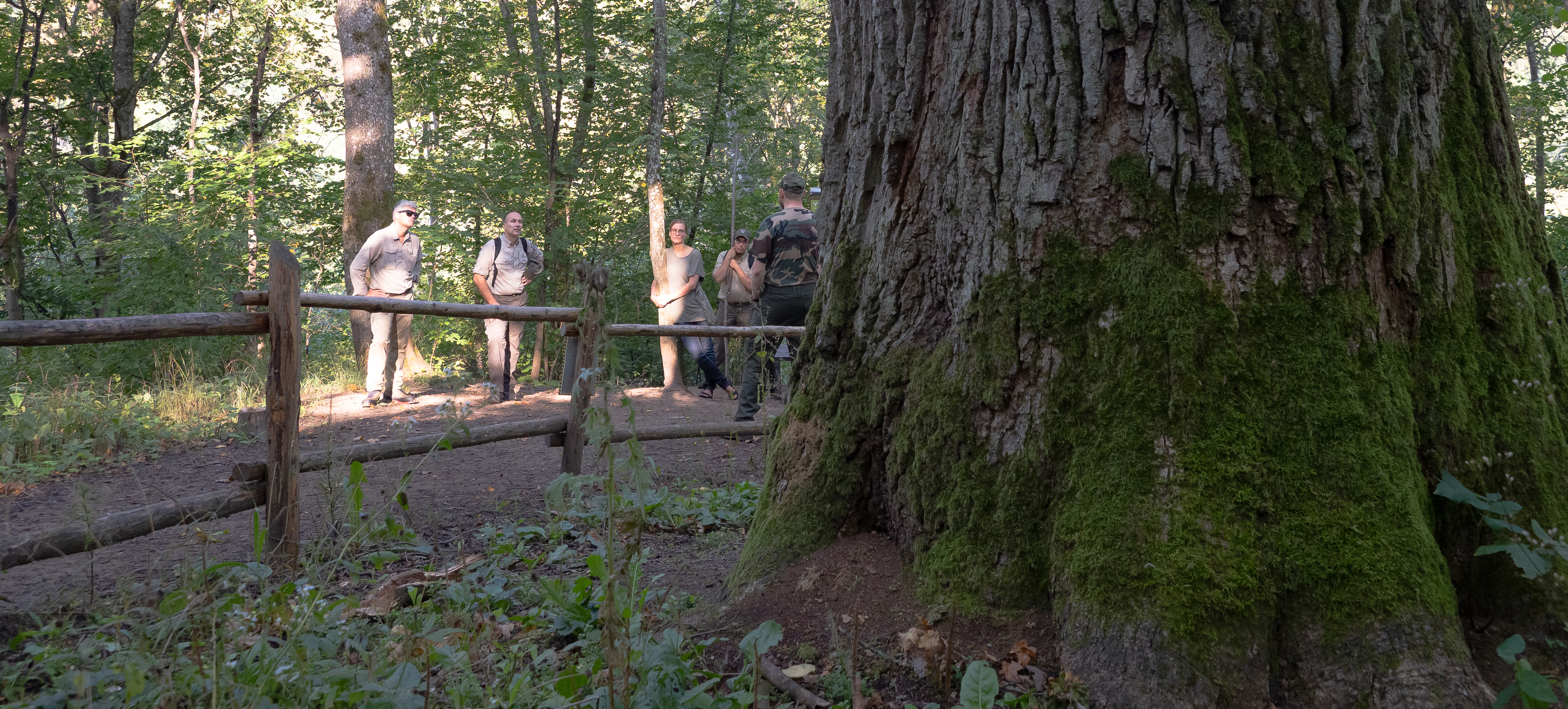
Today, trees like the Sacred Daubų Oak are known as microhabitats for endangered species. The hermit beetle is one of them. Included in the International Union for Conservation of Nature (IUCN) Red List and considered a priority species in the European Union (EU ), this beetle is a picky creature: it only lives in sunny hollows of old, deciduous trees. Such habitat is key to many protected, yet lesser-known species.
“We preserve veteran trees for the sake of these species, as well as for the sake of people. Many locals are drawn to old oaks. To tell you the truth, I enjoy our work especially because we help old trees to live longer,” says Dalia. During the last five years, her team has inventoried and assessed ancient trees in selected areas across the country, 308 trees in the Neris Regional Park alone. Many trees have been taken care of and their habitats improved. The Sacred Daubų Oak is one of them. Its trunk has been fortified, wounds treated, and the area around it brightened to accommodate the needs of the hermit beetle. “We clear the thickets near veteran trees to allow more sunlight for hermit beetles,” explains Alvydas.
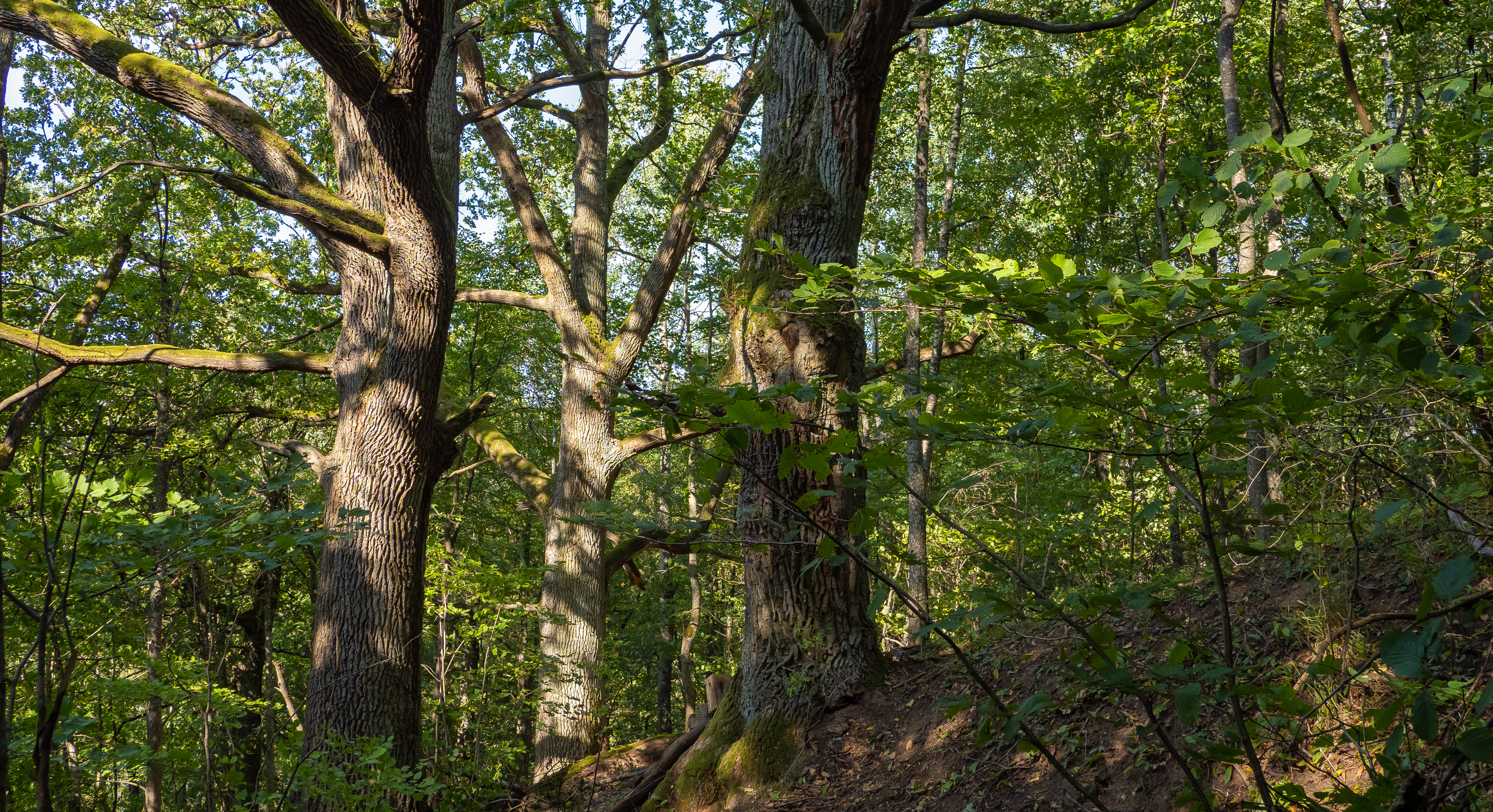
We continue walking up a hill. The undergrowth here is dense: we climb over fallen trees, branches cracking below our feet. The air smells spicy – it must be the mushrooms that Dalia is picking with enthusiasm. “Only the mature ones are poisonous, but these are still young and good for your skin,” she explains.
Another 2000-year-old pagan hillfort and many ancient trees later, we come across a fat dormouse. It catapults itself out of a nesting box, uses two of us as a bridge, and disappears into the hazel maze. But it is good that we found it! “Fat dormice are indicator species. It’s not just some theoretical term, on the contrary, it directly impacts our daily work,” says Tadas. Finding a fat dormouse means that the forest ecosystem is balanced. “Recently, in another part of the park, we came across a fat dormouse. For the first time! Now we know that the forest is doing well and we don’t need to meddle there anymore.”
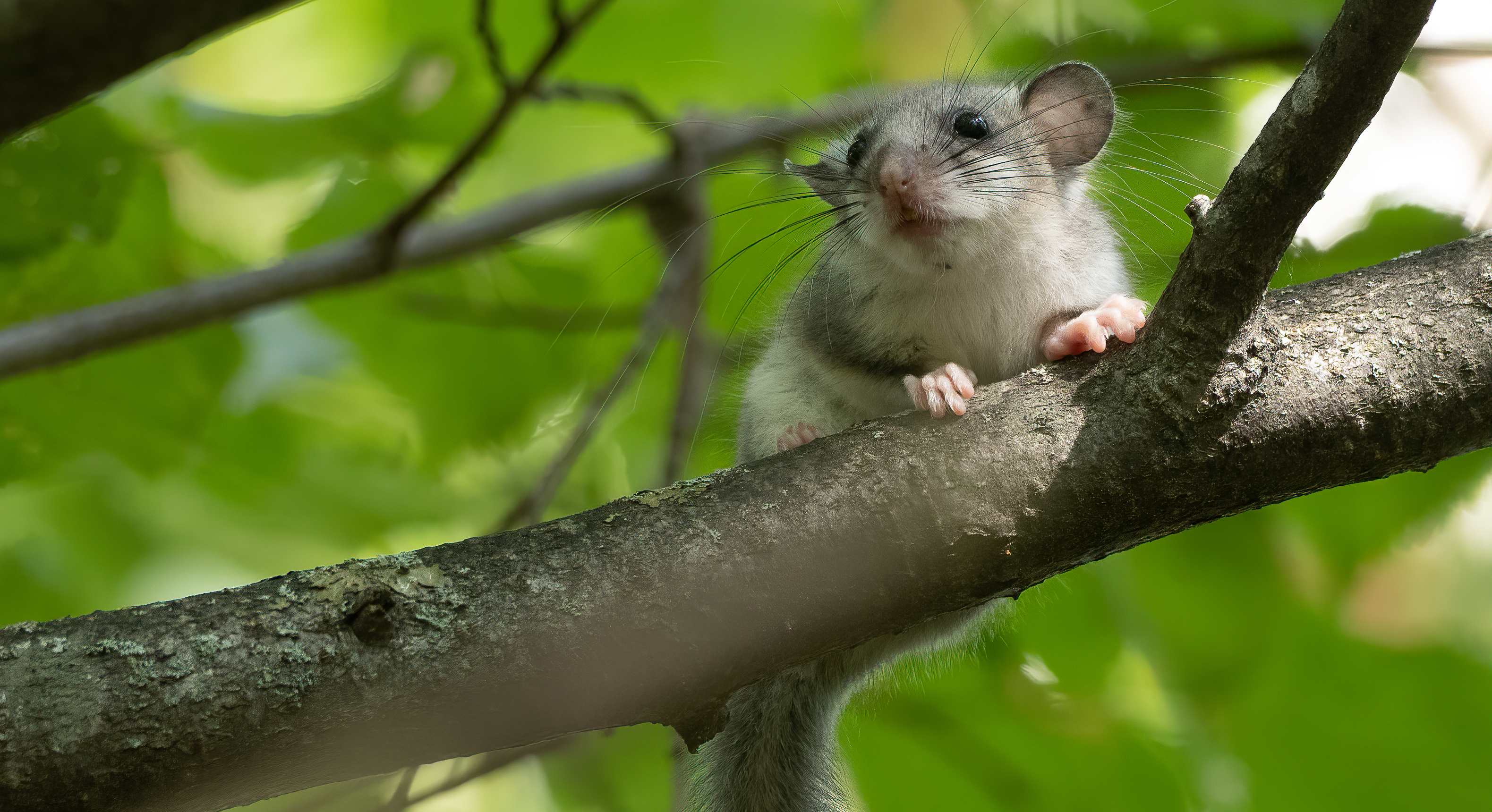
These rodents are simple creatures. All they want in life is to eat and sleep. All they need is hollows in old deciduous trees. But old trees are rare these days and fat dormice are struggling to survive. Red-listed in Lithuania since 1989, the fat dormouse is an endangered species with only 10 known populations across the country. Three of them are found in the Neris Regional Park. The species conservation works started here in 2005, in accordance with FSC regulations. Since then, park ecologists, volunteers, and researchers have set up over 400 nesting boxes to provide additional habitats for fat dormice. The populations of this plump rodent are monitored and the forest undergrowth is kept intact – fat dormice need dense hazel shrubs to safely move above the ground. The ongoing monitoring results show a stable population with natural fluctuations.
After three hours of hiking, we bid our farewells to the Neris Regional Park. What does the future hold for its hidden treasures? As in any FSC-certified forest, in accordance with principles on environmental and high conservation values, endangered species and their habitats are protected. The same principles guard historical sites, as well as old hollow trees and their microhabitats. And there is more good news – as of 1 January 2021, a new FSC National Forest Stewardship Standard of Lithuania has entered into force. In accordance with it, reserved sample areas, such as endangered species habitats, will double to at least 10 per cent of each FSC-certified forest management area. This means more forests will be protected and safe for the fat dormouse, the hermit beetle, and other endangered species. The Neris Regional Park will remain a haven for all, forever.
